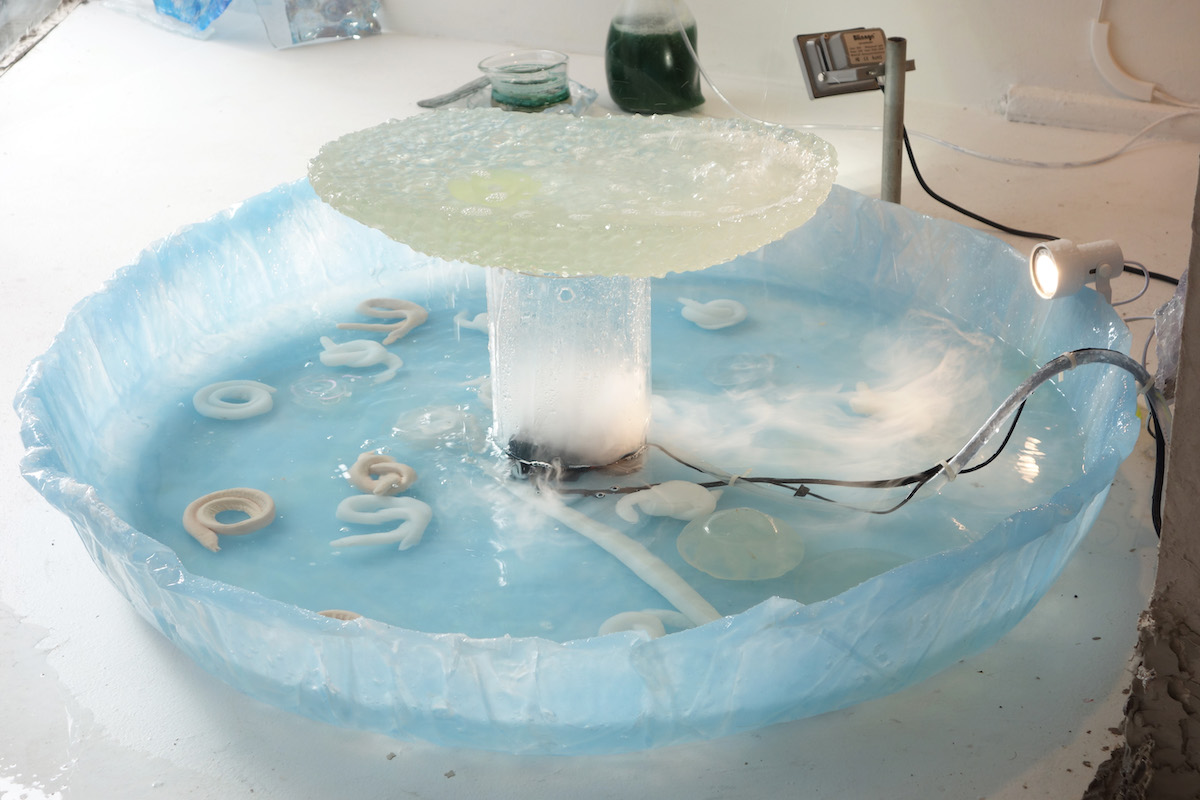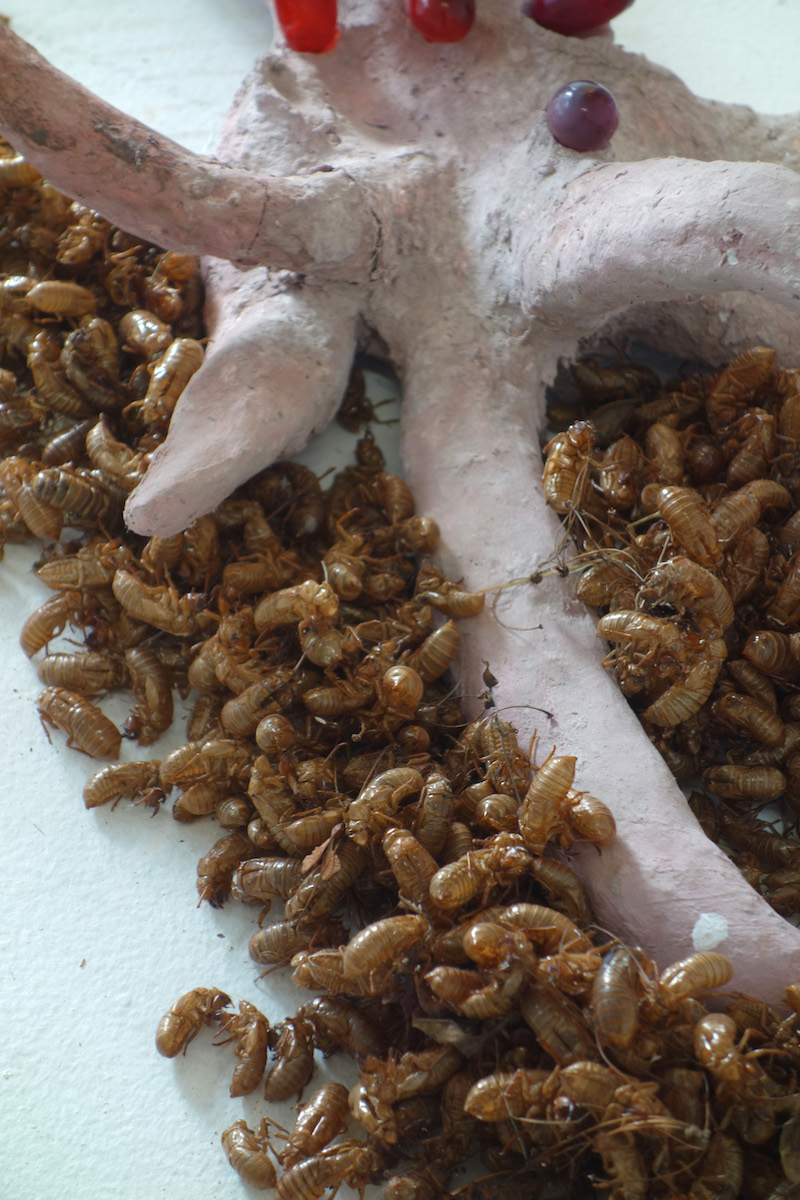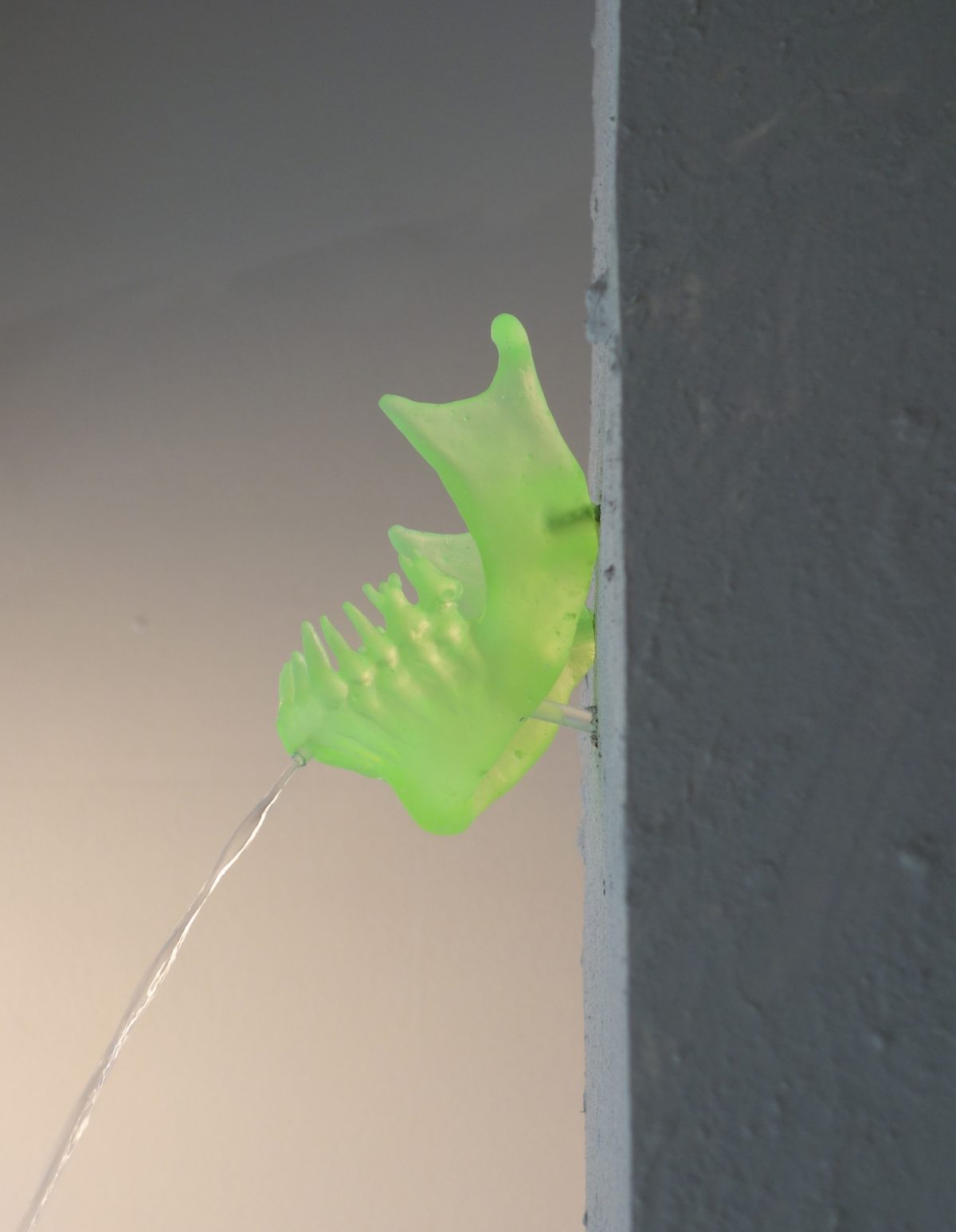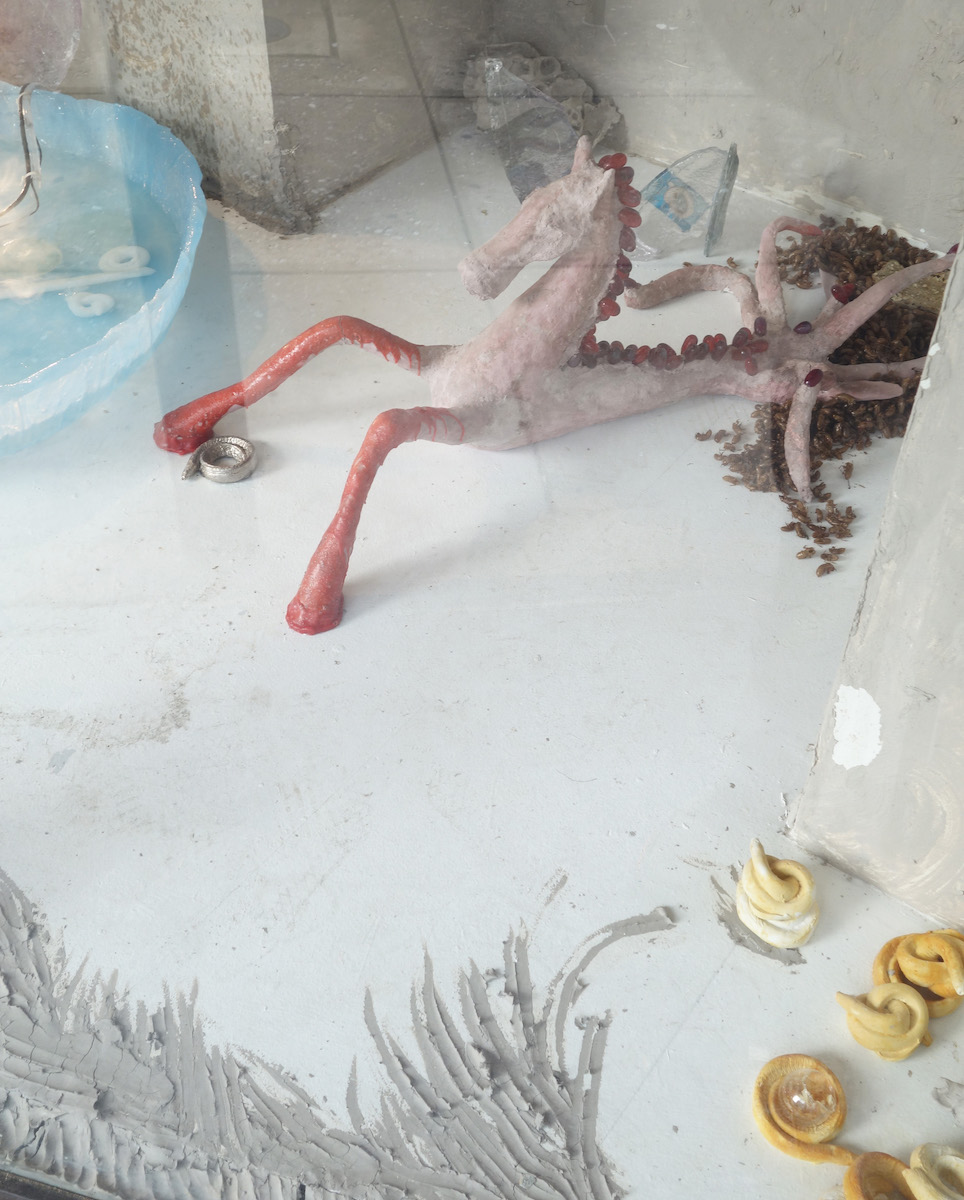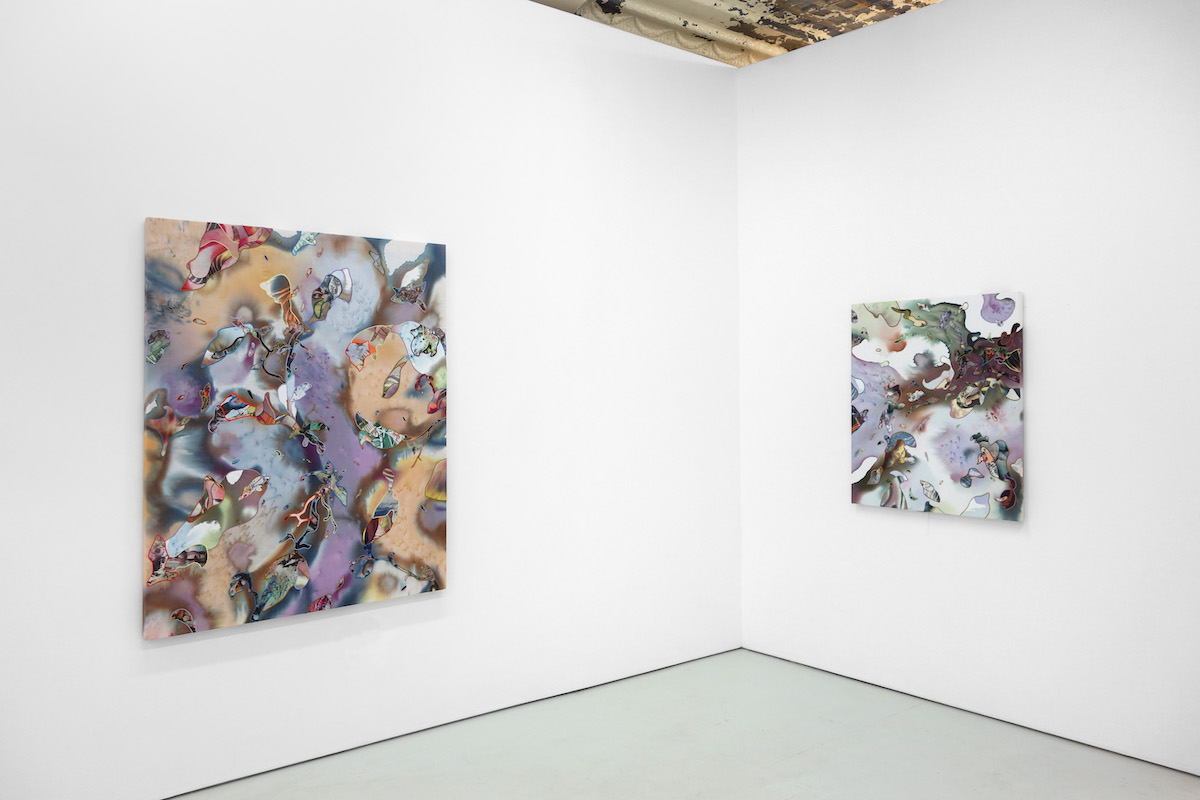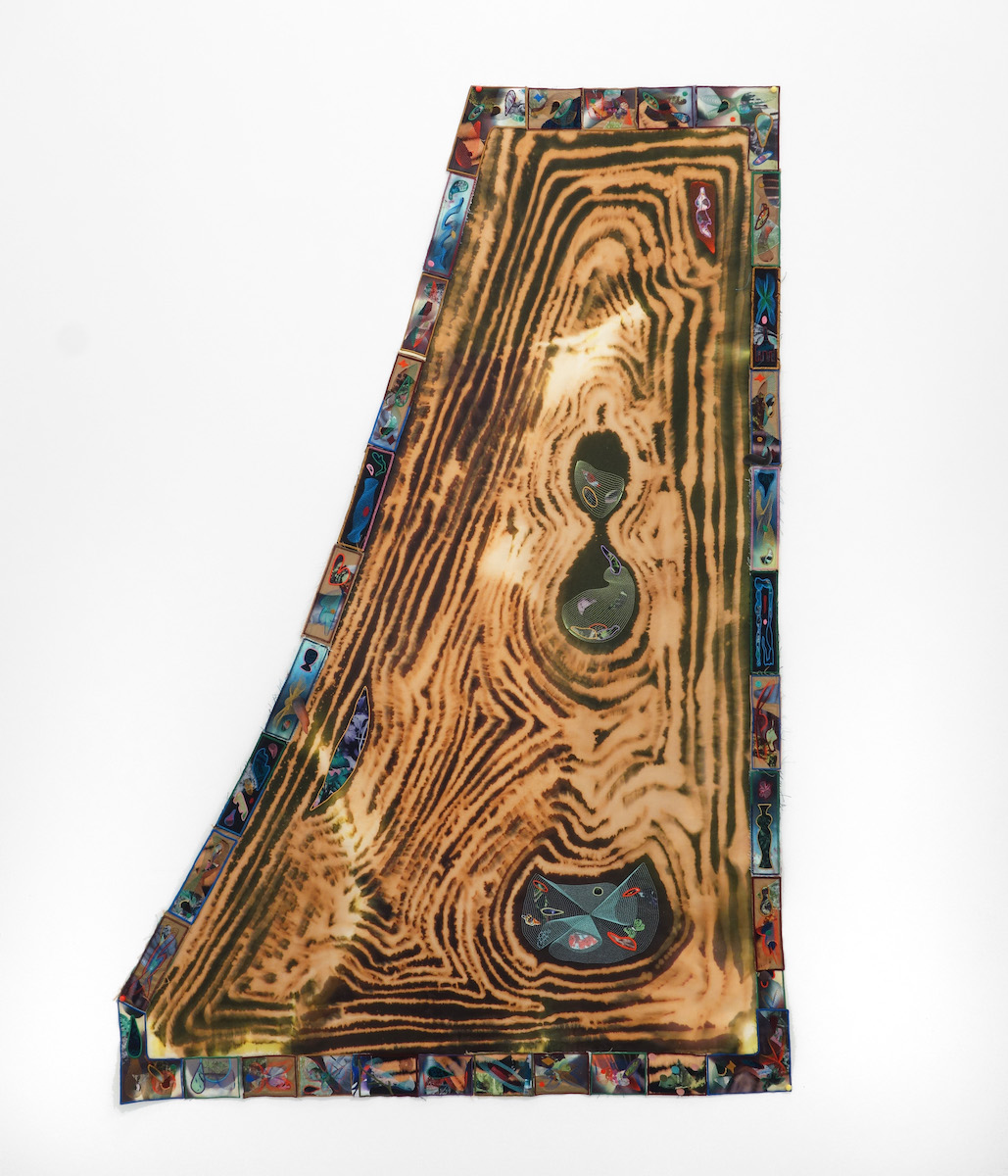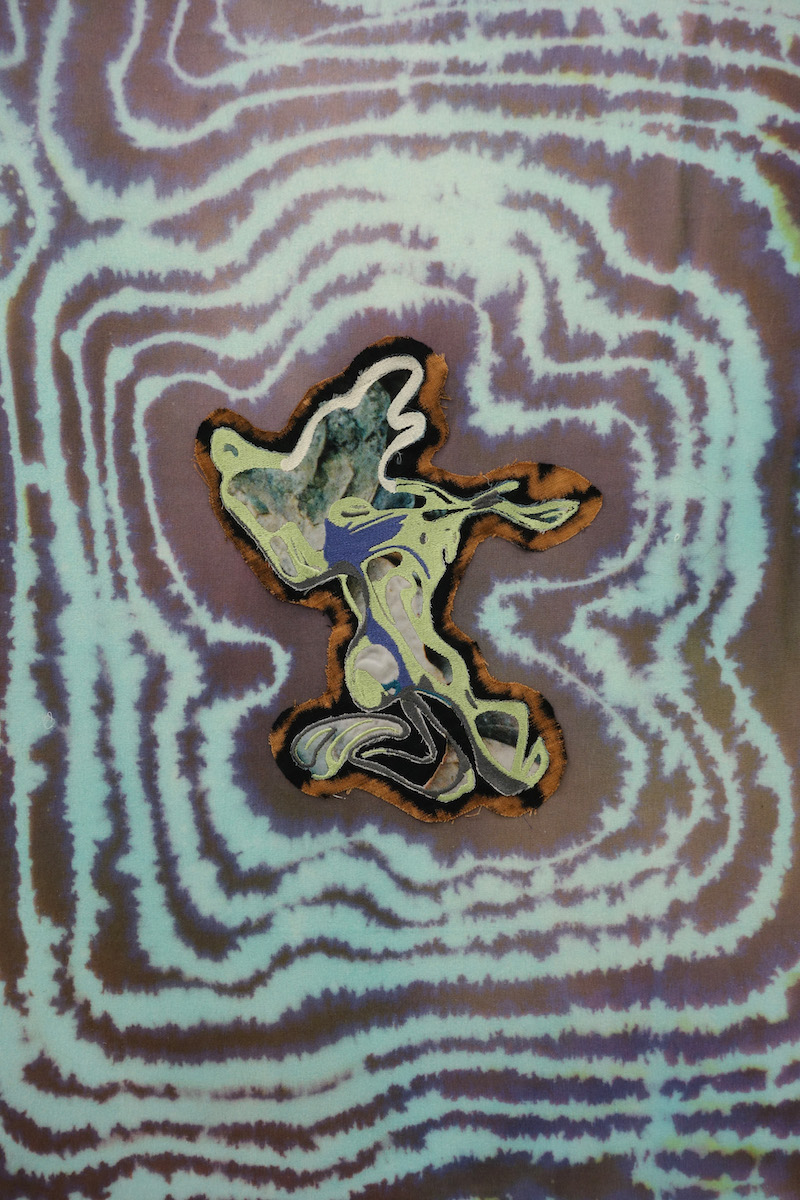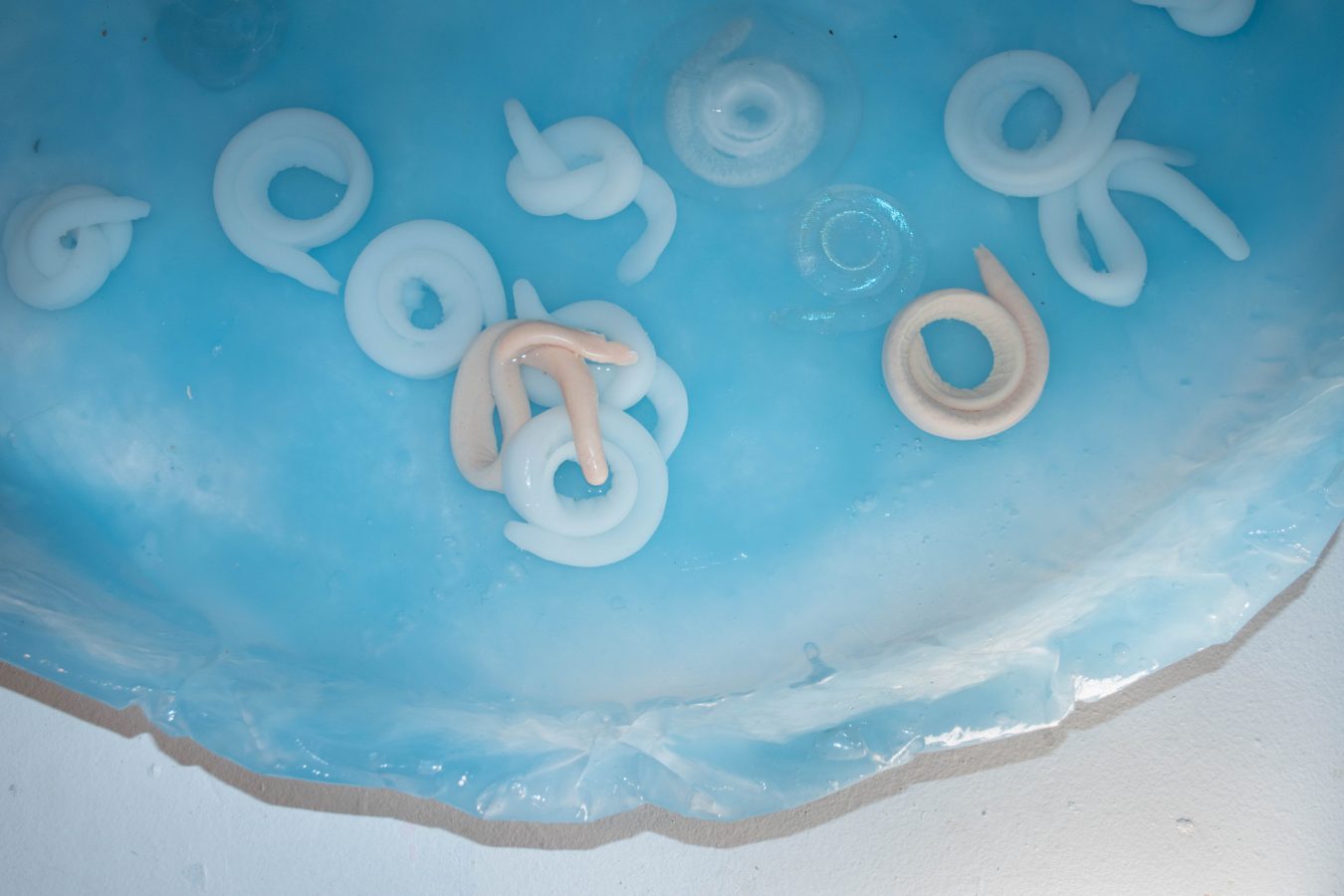Extraction, exhaustion, and restoration are three words pinging around my mind after viewing the two shows currently up at Resort. These themes resonate because the shows, Sasha Fishman’s The Space Between Your Nostrils and Sophia Belkin’s Ground Swell, are the last ones for the downtown Baltimore gallery in its current form after three solid years of programming.
Last November, a developer purchased a block of ten properties, which includes Resort at 235 Park Avenue and other businesses, for less than $1 million total. According to Resort co-directors and partners Seth Adelsberger and Alex Ebstein, the basic reason to close the gallery is that the project is not financially sustainable, and the uncertainty after the block’s sale was a signal to end things on their own terms.
A triple-net lease made their building more affordable to rent, but it also required the tenant, rather than the owner, to pay for taxes, repairs, and code- and safety-related renovations. After investing their own money to bring it up to code, Adelsberger said that the gallery’s sales over the past three years have not been enough to keep the project moving. He said the developer expressed interest in keeping the gallery in that building, but the new owners’ plan to turn the buildings’ upper floors into apartments and make the first floors retail wouldn’t work for Ebstein and Adelsberger, who presently use all three floors and wouldn’t be able to afford just the first-floor rent at market rate. “As easy as it would be to blame the developers with the narrative of pushing out the artists, it’s not the case here,” Adelsberger wrote in an email.
Even if it’s not precisely another example of developers cashing in on an area’s low prices and pre-established cultural capital, the situation does follow a familiar trend of exhausted and underpaid artistic labor. “There’s no specific way in which the city is looking at these [businesses] block by block and making sure the parts of the community that create things to do are still there and aren’t getting priced out,” Ebstein said in a phone call. “I’m worried we’re going to move out and it will just sit empty.”
There is much to consider about depletion and extraction in a low- or no-budget art space within a gentrifying city, despite a solid track record of success for many of the artists Resort has exhibited. The gallery’s closing is coloring my analysis of the current shows and vice versa—and for the better, because there’s a small seed of hope in all of this.



